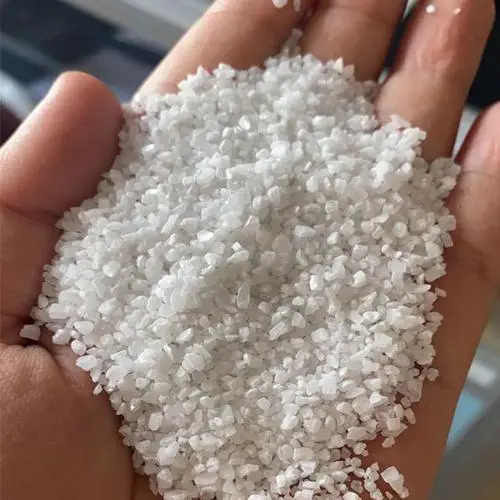
Talc Powder Pricing Insights from Manufacturing Sources and Market Trends
Understanding the Dynamics of Talc Powder Prices A Factory Perspective
Talc powder is a versatile mineral used across various industries, including cosmetics, plastics, ceramics, paper, and pharmaceuticals. Known for its lubricating properties and various functionalities, talc's demand has surged, leading to fluctuations in its pricing. In this article, we will explore the factors influencing talc powder prices from a factory standpoint and how manufacturers adjust to the ever-changing market dynamics.
What is Talc Powder?
Talc is a mineral composed mainly of magnesium, silicon, and oxygen. When processed into a fine powder, talc becomes an effective filler and lubricant, enhancing other materials' properties. Its unique characteristics, such as softness, hydrophobicity, and chemical inertness, make it an invaluable component in consumer goods and industrial applications. As industries grow and evolve, so too does the demand for high-quality talc powder, which in turn affects its pricing.
Key Factors Impacting Talc Powder Prices
1. Raw Material Costs The primary factor influencing talc powder prices is the cost of raw talc. Talc is mined from the earth, and the extraction process involves significant labor and resources. Changes in mining regulations, environmental considerations, and operational costs can lead to price variations. For instance, stricter environmental regulations may necessitate more expensive mining practices, driving up production costs.
2. Production Costs In addition to the raw material costs, various other factors contribute to the overall production cost of talc powder. Energy prices, labor costs, and maintenance of machinery all play a role. A factory that uses outdated equipment may face higher operational costs, indirectly affecting the market price of talc.
3. Export and Import Tariffs Many countries heavily rely on imported talc, and tariffs can significantly impact pricing. Trade policies, international relations, and global demand shifts can cause fluctuations. For example, if a major talc-supplying country faces political unrest or implements tariffs, it can create shortages, leading to increased prices in importing nations.
4. Market Demand The demand for talc powder is closely tied to the health of industries that use it. For instance, the beauty and personal care industry often dictates the price due to its reliance on talc for products like baby powder and makeup. An increase in cosmetic sales can lead to higher talc prices. Similarly, the housing market's growth, driving demand for construction materials, can also impact talc prices used in joint compound and paint products.
5. Technological Advancements Innovations in production techniques can either lower or raise talc prices. Factories adopting more efficient technologies may reduce their operational costs and offer more competitive prices. Conversely, the introduction of stringent quality standards may require factories to invest in better technology, increasing their production costs and, consequently, the price of talc powder.
talc powder price factory

6. Geopolitical Factors Geopolitical tensions can disrupt supply chains and affect pricing. For instance, a country that is a major talc producer could suddenly reduce exports due to political instability, thus impacting global prices. Additionally, currency fluctuations can affect costs, especially for countries heavily reliant on imports.
Factory Strategies to Manage Price Fluctuations
To navigate the volatile pricing landscape, factories often implement several strategies
- Diversification Many manufacturers may seek to diversify their supply sources to mitigate risks associated with relying on a single supplier, ensuring a steady and cost-effective supply of raw materials.
- Efficiency Optimization Investing in technology and modern equipment can lead to more efficient production processes, reducing overall costs and enhancing competitiveness in the market.
- Strategic Stockpiling Some factories may choose to stockpile talc powder at a lower price during periods of market stability to hedge against future price increases.
- Enhanced Quality Control By ensuring high product quality, factories can often command higher prices, allowing them to maintain profit margins even during periods of increased raw material costs.
Conclusion
In summary, talc powder prices are influenced by a myriad of factors, from raw material costs to market demand and geopolitical stability. For factories producing talc powder, adapting to these fluctuations requires strategic planning and timely interventions. Understanding these dynamics is crucial for stakeholders in the talc supply chain, as it affects not only pricing but also the overall sustainability of the market. As industries evolve, so too will the strategies employed by manufacturers to ensure they remain competitive in this ever-changing landscape.
Share
-
Vermiculite Wholesale – Premium Quality, Bulk Supply & Competitive PricingNewsJun.10,2025
-
Premium Glass Pebbles Custom Glass Pebbles Factory & OEM Manufacturer Reliable Custom Glass Pebbles FactoriesNewsJun.10,2025
-
Expert Custom Zeolite Producers Manufacturers & FactoriesNewsJun.10,2025
-
Custom Glow in the Dark Beads High-Quality Custom ManufacturersNewsJun.10,2025
-
China Ceramsite Balls Factory - Lightweight & Durable Media Solutions ManufacturerNewsJun.09,2025
-
Custom Matte Mica Powder Manufacturers High Quality & AffordableNewsJun.09,2025






